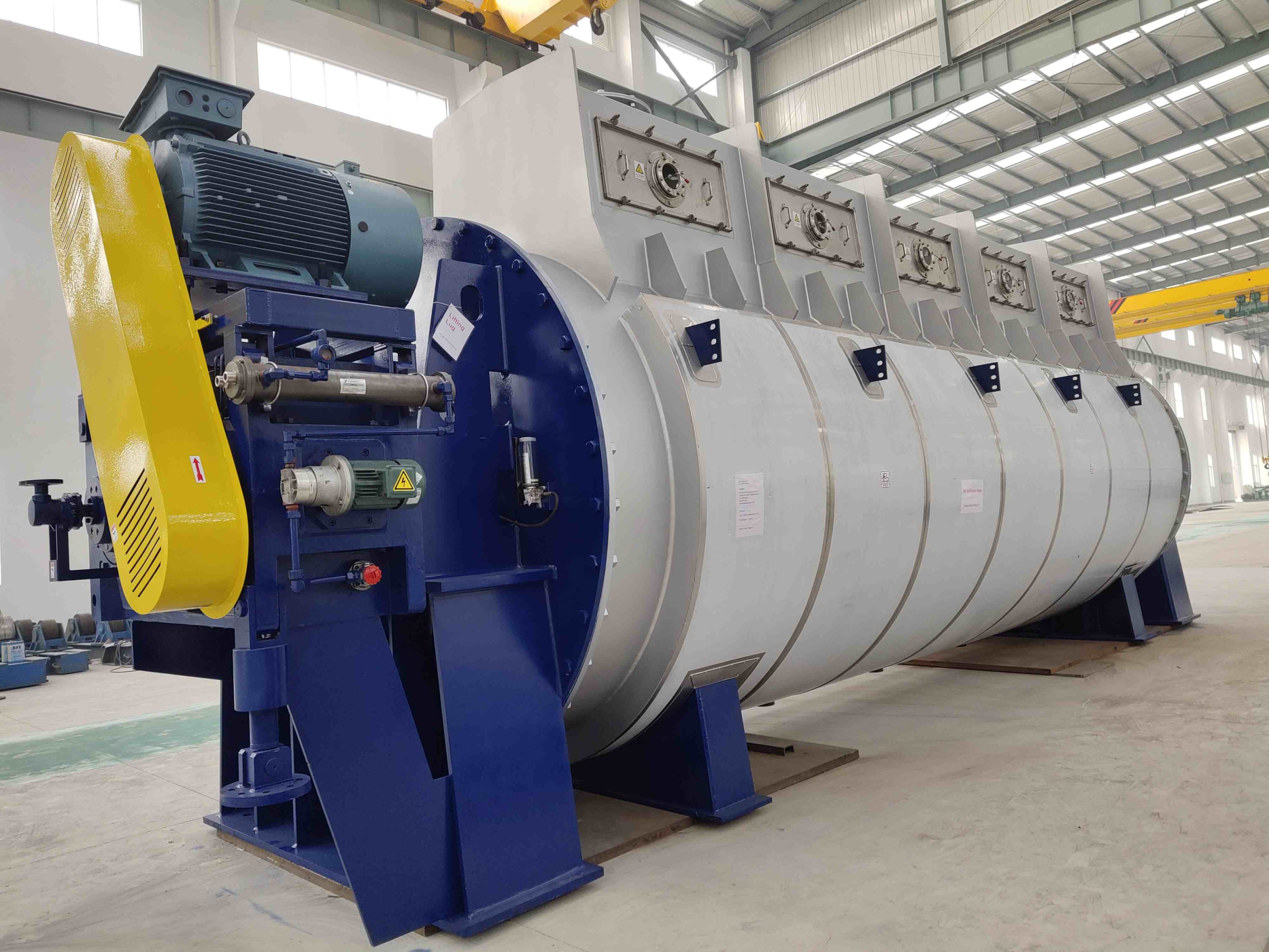What is a Disc Dryer?
A disc dryer is a type of thermal drying equipment that utilizes heated discs to remove moisture from materials. This innovative technology is particularly effective for drying slurries, pastes, and other viscous materials. The design typically features a series of heated discs that rotate, providing a large surface area for heat transfer and moisture evaporation.
How does a Disc Dryer work - Working Principle
Drying of any material is performed by using saturated steam, in the pressure range of 6 to 10 barG, and temperatures from 158 °C - 180 °C. The main parts of the machine are the stator and rotor. Double-wall discs are welded perpendicularly to the rotor, which rotates around the central shaft. The indirect heat is transferred from steam to the dried material, which is continuously mixed and moved along the machine. The additional surface area can be achieved by adding to the stator heated steam jacket. Scrapers welded to a stator ensure continuous mixing and are preventing material from sticking to the discs. Paddles brackets for material mixing are mounted on the disc periphery. Contaminated vapor is discharged by a centrally placed vapor dome to the exhaust gases purification system. Dry product is continuously discharged by the side or bottom outlet usually by screw conveyor.
Contiunous drying technology have been invented in the 1960s and was developed for fish meal by Stord Bartz Company in Norway. The horizontal, industrial dryers are still used in the industry as a robust and heavy-duty machines. Over the years it has turned out that the service life of the machines can reach up to 25 years facing fatigue and corrosion caused by processing material. Stainless steel design can guarantee a long life of the machine and corrosion-free construction. Capacities vary depending on machine size.
Characteristics of a Thermal Disc Dryer
Meat rendering and fish meal processing require removing unnecessary fluids from fish and from animal by-products. Rotary dryers are made to work with a steam pressure of up to 10 bar and have become an excellent solution due to their use of the natural fat content of the material. The large surface area of the rendering machines affects effectively on the removing the water vapor. A pressure test is carried out prior to each shipment. Fish meal and meat rendering machines are designed for the following PED, ASME, DNV, TUV, Lloyd's, and bureau veritas etc
Benefits of Using
1. Energy Efficiency: Disc dryers are designed to maximize heat transfer, which can lead to significant energy savings compared to other drying methods.
2. High Throughput: With their large surface area and continuous operation, dryers can handle high volumes of material, making them ideal for industrial applications.
3. Versatility: These machines can process a wide range of materials, including food products, chemicals, and pharmaceuticals, making them suitable for various industries.
4. Quality Control: The controlled dryer environment helps maintain the quality of the final product, reducing the risk of degradation or contamination.
5. Vacuum in Processing Chamber - boiling point decreased for sensitive materials.
Drier Applications
- Fish meal
- Bone meal
- Poultry meal
- Hydrolyzed feather meal
- Spent grain
- Sludge
Conclusion
In summary, disc dryers are a powerful and efficient solution for processing various materials across multiple industries. Their energy efficiency, high throughput, and versatility make them a preferred choice for manufacturers looking to optimize their drying processes. If you’re considering investing in a disc dryer or want to learn more about how it can benefit your operations, feel free to contact us! We’re here to help you make informed decisions for your business.
If you require more information about the available solutions, please contact us via the contact form on the last tab, by e-mail info@tg-machines.com or call us.
For more technical information, please see our technical data sheet.






 Energy-efficient machine
Energy-efficient machine

 Download technical data sheet
Download technical data sheet